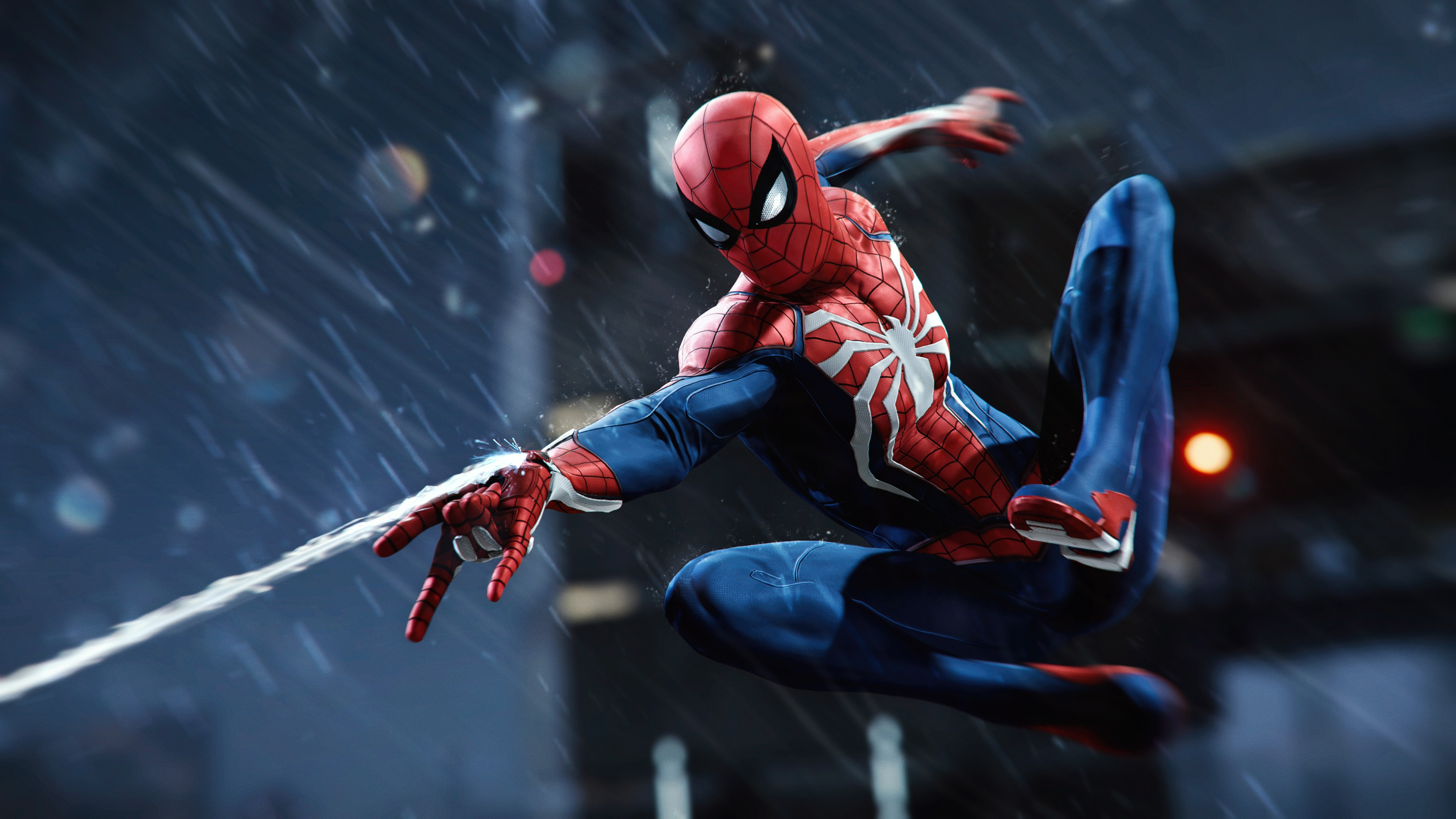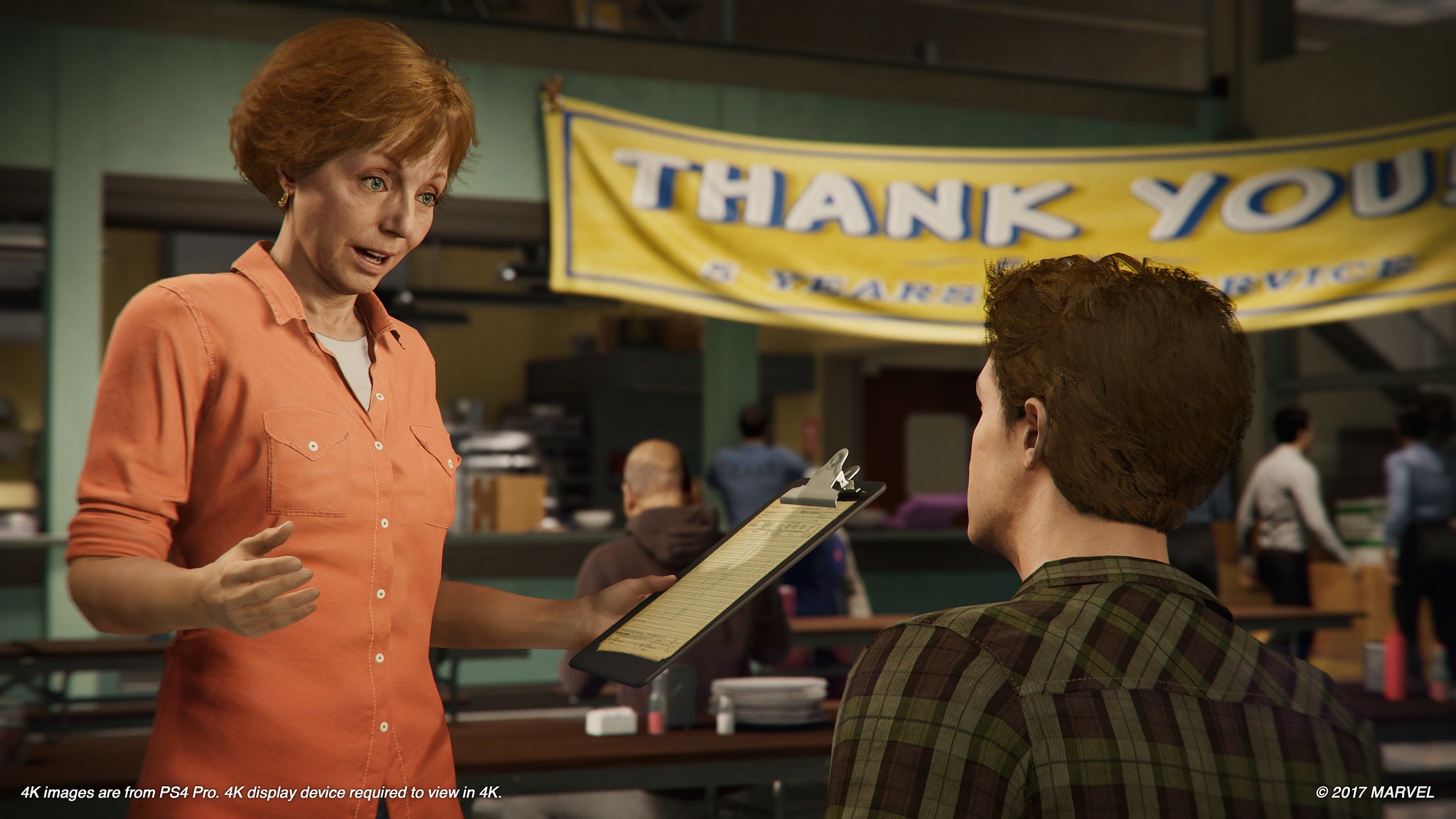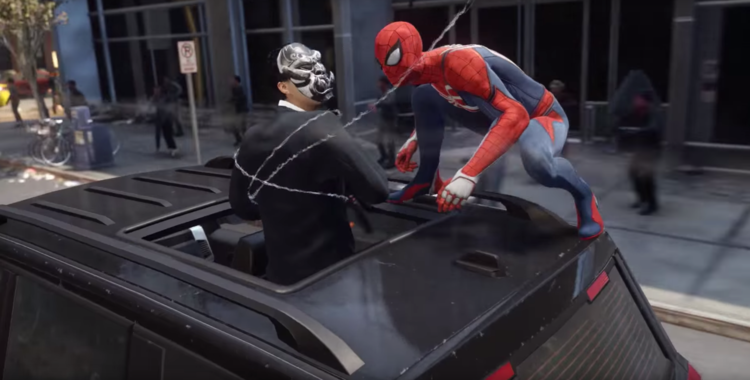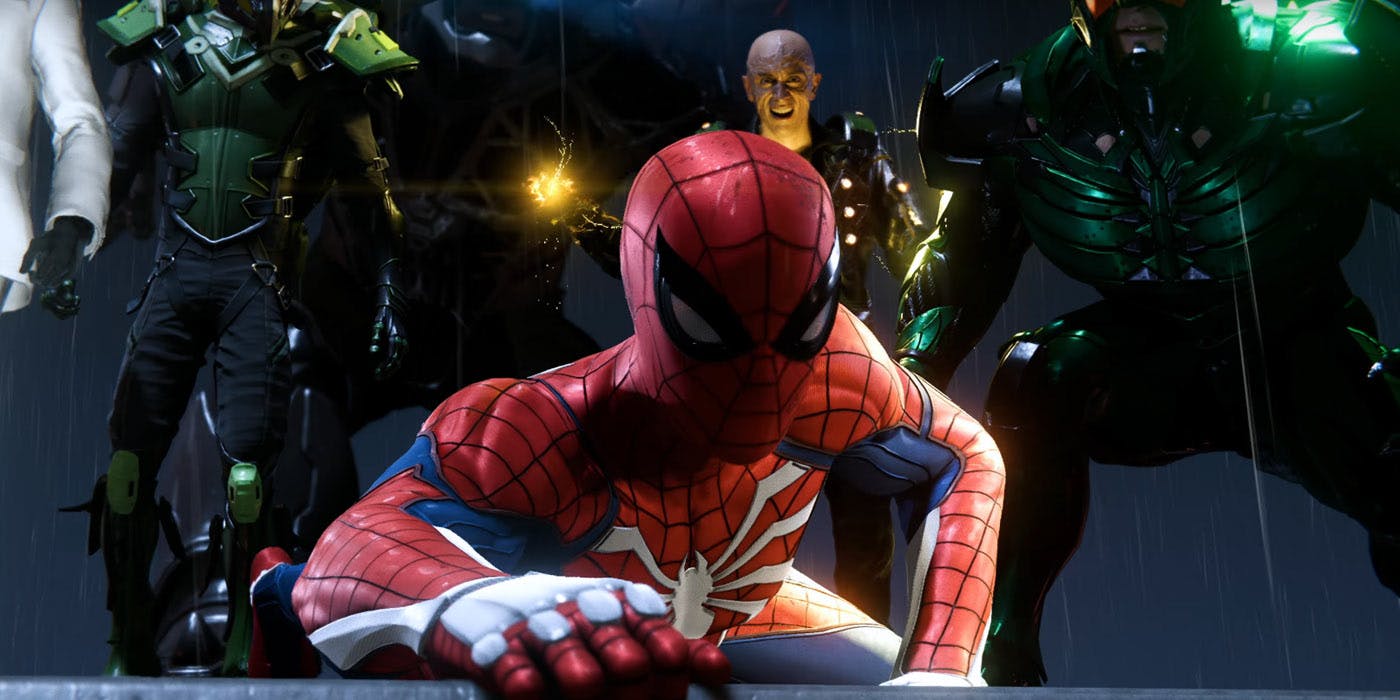Contents

I should preface this review with a minor spoiler warning. The first third of the game will be discussed for the sake of context as well as some story details not included in marketing. I dare not discuss anything in the second half due to my personal astonishment of the overall development of the story. With that out the way, let’s get into the review.
A Stunning Spectacle
The first cutscene wastes no time and provides an incredibly detailed panoramic shot of Peter Parker’s apartment. The cinematography in games nowadays rivals that of modern film in some cases and Marvel’s Spider-Man is a prime example of the advancements video games have taken in that category. Plenty of sequences in this game are beautifully shot and makes cutscenes genuinely engaging to watch, which is a rarity for modern video games to accomplish. The player is tasked to take a gander at all of the details and easter eggs Insomniac implemented in the opening scene alone. Get used to me gushing over the impeccable quality of the graphics as Insomniac may have gone overboard. PuddleGate be damned, this game is drop dead gorgeous in every conceivable facet.

I first gasped at the effort poured into the F.E.A.S.T. building, which often contains Aunt May scenes. The indoor environments in general demand linear paths for the most part, despite having several compartments accepting player exploration. Parker can walk in the laundry room of F.E.A.S.T. even though the game never asks for the player to enter it. You can never step foot into that laundry room throughout the main campaign and nothing would have changed. Regardless of the room providing no use to the story, the player can still examine the highly polished washing machines, coat racks, laundry detergent, and bleach. This needless amount of detail does not detract from the overall experience mind you. In fact, it enhanced the game for me as it showed how much love Insomniac poured into this game.
I’ve praised a virtual laundry room enough already, so how are the character models? Again, they’re all incredibly detailed. The voice cast’s performance capture awakens those models to an almost uncanny valley degree if the art style followed realism instead of the comic book nature. The voice talent, in general, performs their parts exceptionally well. Yuri Lowenthal plays an excellent Peter Parker/Spider-Man. Every angle and scene in the game can be duplicated on a comic book and very little would look out of place or compromised. Had this game targeted cel-shaded rendering, it could easily have pulled it off. However, Insomniac found a happy medium between realism and cartoon animation. Lighting is exaggerated but not to a distracting degree. Textures bear realism but do not compromise the artistic integrity. The game blends the best of both worlds and produces some of the most attractive video game graphics I’ve seen.
/cdn.vox-cdn.com/uploads/chorus_image/image/60702135/Spider_Man_PS4_Preview_MJ.0.jpg)
John Paesano’s musical score elevates the package even further. Whenever Spider-Man transitions into swinging, variations of the main theme kicks in. If you reached an intense moment of the game, the music emphasizes its dramatic and stressful moments of the theme. If you recently defeated a villain, the music amplifies the victorious nature of the theme. Something also worth noting is how Spider-Man’s voice changes depending on whether or not he is swinging. He sounds out of breath when exerting himself, but sounds normal when standing still. These minor changes immerse the player more so than usual. The sound design also enhances the gaming experience, from the city folk gasping when Spider-Man swings directly above them, to gunfire realistically muffling and echoing behind buildings. If I were able to get ahold of a vinyl soundtrack for this game, I would in a heartbeat.
A Memorable Adventure
Storytelling is another strong suit of Marvel’s Spider-Man. The story wastes no time establishing Peter Parker as he spent at least 8 years of his life as the notorious web-slinger of Manhattan. This is a Peter Parker with more humility than his previous cinematic incarnations. He knows his limitations, but he also admits he has more to learn. He ended his relationship with Mary Jane and is currently single. He knows the name of his biggest foes by heart but has yet to encounter the likes of Green Goblin or Doctor Octopus, though he has worked with Doctor Octavius for quite some time and is familiar with the Osborn family. Aunt May helps with the local homeless and emergency shelter F.E.A.S.T. with Martin Li, whose background I will not disclose for the sake of non-spillage of the narrative, in charge of the operations. What you do need to know about Martin Li is that he’s one of the main antagonists of the game, Mister Negative.
Thankfully, despite some marketing spoilers, the story is quite unpredictable as Insomniac pursued their own creative task in creating an original Spider-Man universe, in which they did just that. The major villains have their own motivations, politics, and vendettas with other well-known villains such as Scorpion, Rhino, Vulture, and Electro in supporting roles to the real masterminds of Spider-Man’s opposition. Neutral characters with flawed philosophies such as Silver Sable serve their purpose in giving Spider-Man more of a headache, but no villain appears unnecessary. All of Insomniac’s interpretations of the hero’s adversaries are distinct and work well with each other. Peter Parker’s allies, while less in numbers, share the same positive attributes in addition to giving the narrative some warmth and comfort to balance out the fierce intimidations.
As stated before, Aunt May serves the impoverished at F.E.A.S.T. so Peter has to live independently. She is familiar with Peter’s work schedule and sporadic disappearances. She’s far less clingy to Peter than previous film incarnations, which is a welcome change as someone who hardly reads the comics. Fascinatingly, she fits her familial role of an aunt rather than becoming a motherly figure to Peter and that’s perhaps thanks to the age of this storyline. Mary Jane Watson returns as an investigative journalist willing to help Spider-Man’s latest missions. She hardly gets captured this time around as not to fulfill her usual damsel-in-distress archetype. Miles Morales enters the scene as well, even becoming a playable character. He’s far less prevalent than MJ, but he has his time to shine well into the second half of the game.

Doctor Octavius (he’s one of the first characters you encounter in the story) is the most interesting ally of Spider-Man as they too share a lengthy history, thankfully not to a romantic degree. I won’t go into many more details, but I view their chemistry as one of the most potent in the game.
The story in general juggles between various allies. Parker goes to Octavius to pursue scientific achievements, to Yuriko Watanabe (the police captain) to put a halt to recent super-criminal activity, to Aunt May for emotional and informational support, and Mary Jane provides mission guidance and behavioral support. All of his partners help Spider-Man in unique ways and their attitudes toward him differ as a result of massive events that occur frequently throughout the game. Heterogeneity strengthens these characters and sometimes offer quite powerful dramatic climaxes. The unpredictable nature of the narrative and witty writing creates one of the strongest superhero stories I’ve seen in a game.
Gripping Gameplay
Finally, let’s talk about the gameplay. Hoo boy, is it something else. First and foremost is that the combat exceeds that of the Arkham games. I realize that is a completely subjective statement, but hear me out. Insomniac added few twists to the Arkham-style combat system, but the adjustments they made gives Spider-Man a slight edge above the legendary system Rocksteady crafted. Spider-Man relies on speed and versatility. Thus, the combat depends less on keeping a consistent combo to remain fast and fluid like the Arkham games. Dodging is essentially foolproof as Spider-Man can maneuver around anything foes throw at him. I played this on Amazing (or normal) difficulty and the game turned out much easier than I was hoping. However, the weakened difficulty did not subtract from my enjoyment of the combat, which is a testament to how entertaining it is.

What ultimately places Marvel’s Spider-Man above the Arkham games in terms of fighting mechanics is the integration of Spider-Man’s web-slinging. From an isolated position, you no longer have to sprint or have to keep a combo rolling to instantaneously zip towards an enemy like in Arkham. Instead, you simply press triangle, or however you choose to map the action, to launch yourself towards the fray. This minimizes the downtime during the fight and keeps the player involved in beating the crap out of criminals. Holding square uppercuts enemies in the air, which is recommended to crooks who wield a melee weapon. This helps for escaping bullets coming from armed deplorables (that created an unnecessary political image in my head). Spider-Man also naturally pendulum kick foes with fluidity during a lengthy combo. Nothing feels unnatural or sluggish. It’s speedy, acrobatic, and ridiculously fun. While it may seem on the easier side to some players, there’s always Spectacular difficulty and the upcoming New Game Plus to challenge more resilient gamers.
Stealth sections also lack the slow nature from the Arkham games, albeit losing a fair amount of difficulty. The hardest stealth moments come from eliminating snipers as you have to tackle them before facing fist-fighting foes (alliteration is awesome). Mary Jane segments consist of stealth gameplay as well, though without the Spidey powers. These are quite easy for me. If you get caught, you just didn’t go the predetermined path the game wanted you to go. Oftentimes, the path is hard to miss and it ultimately feels like a timing game. Though, nothing in these sections are inherently bad. In fact, I found myself entertained when the game tossed in some cool animations or twists. They’re also beatable within five minutes, so the tedium is hard to see negatively.
Some Minimal Gripes
Peter Parker’s Octavius puzzles may weaken the pacing for some players, however. The player is tasked to complete a small set of connect-the-dot tile puzzles. Later on, the puzzles have a limited supply of tiles to use, so you have to think more conservatively. These puzzles gradually increase in difficulty, so if you find yourself stuck in one section you can skip it. Yeah, these sections are completely skippable if you either suck at them or find them boring. The option appears if you fail on multiple attempts, but thanks to accessibility settings, puzzles and QTEs can be turned off. Speaking of which, QTEs are appropriately implemented. Just mash square during a few intense sequences or hit X or whatever prompts the game tells you. Nothing impressive, but they’re very short-lived, which is relieving.

Boss battles are often solid. Some fights require limited input from the player, which can be somewhat disappointing. Not in the sense of QTEs, but you lack the entire gamut of Spider-Man’s movement and are confined to timing sections. Thankfully, many of them pit Spider-Man in an arena against the villain. Later in the campaigns, the boss fights strengthen in terms of structure. One of them had me decrease the difficulty as it combined two powerful villains in one battle (I am a mere game journalist lacking in skill after all). The final boss is pretty awesome from a set piece perspective and it holds up well. All of them are well-shot and engaging sequences, though.
Endless Enjoyment
Traversing in Marvel’s Manhattan is a delight to say the least. Swinging is pure, simple fun. You only use R2 to swing and parkour but that doesn’t detract from the sheer excitement I felt swinging. When you time it right, you gain the maximum altitude from the swing. You can’t swing at the sky, so if the nearest building is a five-story complex in a sea of skyscrapers, you must wait until you reach the complex. If you shoot too early, your swing comes sideways and ruins your flow, so it isn’t brainless. It’s easy to understand, but hard to master. Tapping X can catapult Spider-Man forward, which improves velocity temporarily. Chase sequences often require experienced web-swinging, so you are tasked with altering your routes at a moment’s notice and leaping over tall buildings without breaking the flow. These sequences alone proves how satisfying swinging is. Like I stated at the start of this paragraph, it is just plain old fun. It’s practically impossible to get bored of it.

Every facet of the game left me satisfied and thirsty for more. When you beat the campaign, you will likely have a wealth of side activities to complete. The campaign alone took me between 15-20 hours to beat. I finished the game over the weekend of launch with over 5-hour daily game sessions each day. With endgame content, the length of completion can last an additional 15 hours with collecting all of the backpacks, cleaning out all of the enemy outposts, finishing side quests, vanquishing all crimes, and other busywork. Keep in mind, after collecting all of the backpacks and reviving all radio towers among other appetizers being worked on, I never felt as if my time was wasted. The game does reward you for completing some collectibles, whether it be a new suit, development of the universe, or just funny rants from J. Jonah Jameson via his podcast. JJJ reacts to everything you do so that definitely encourages me to keep pushing on.
A Satisfying Result
Marvel’s Spider-Man doesn’t revolutionize gaming or its very own genre for that matter, nor does it need to. This game reminds me of Sleeping Dogs as it combines elements from previous successful game franchises that work quite well. There’s the instant gratification of doing menial tasks from AC: Origins, the fluid combat system from the Arkham series, the dense open world design from the Yakuza franchise, and the dramatic yet witty writing from the Uncharted series. Case in point, this is easily the best Spider-Man game ever made. This is a PlayStation 4 exclusive and I’d say it’s worth picking up a PS4 for this game alone (although I would recommend other exclusives while you’re at it). Marvel’s Spider-Man builds an excellent foundation for a Marvel Gaming Universe and is worth every penny of the dollar.
This review of Marvel’s Spider-Man is based on the Playstation 4 version of the game.

